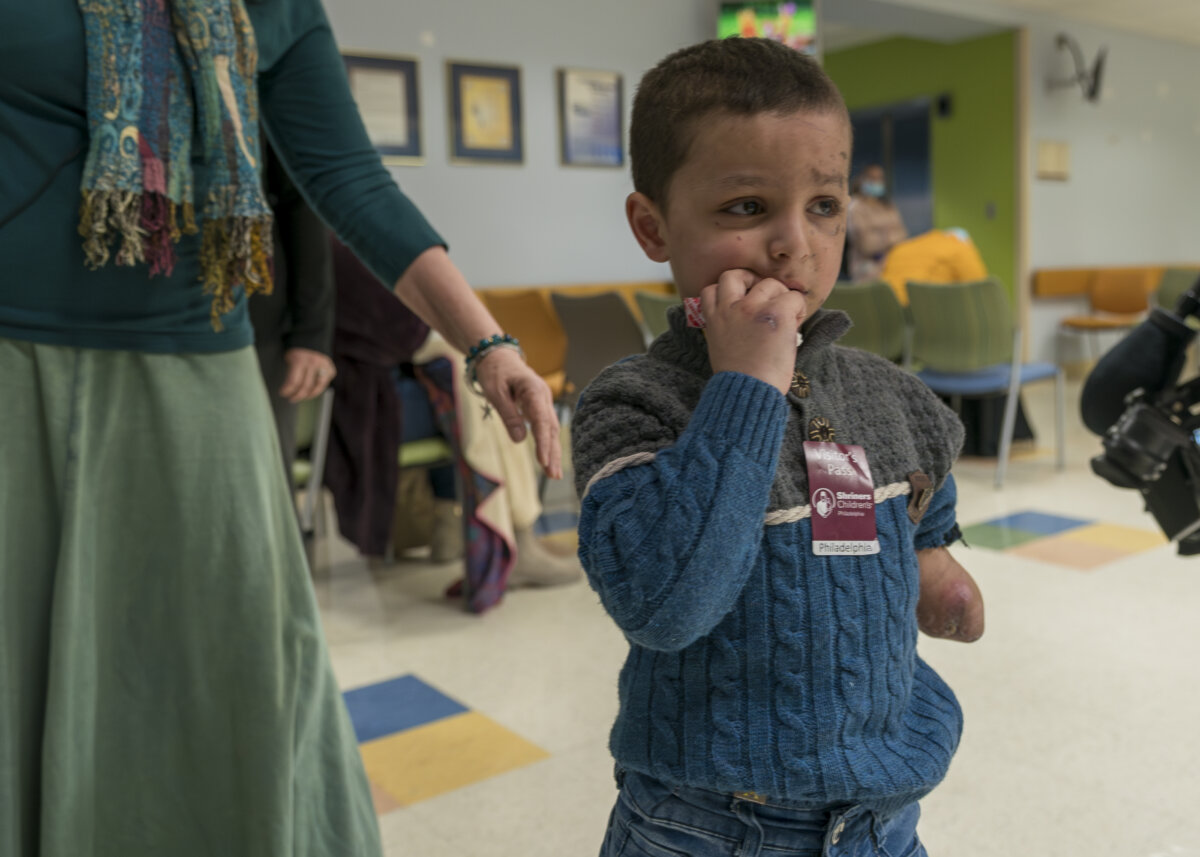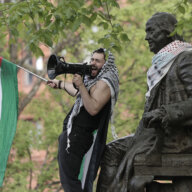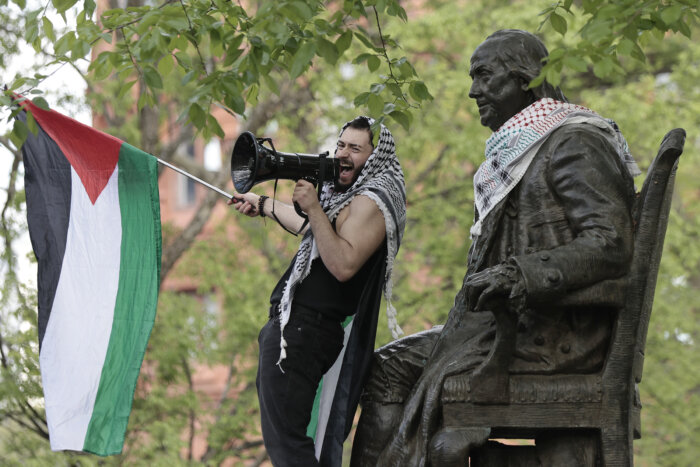By DREW CALLISTER Associated Press
Omar Abu Kuwaik is far from his home in Gaza. The 4-year-old’s parents and sister were killed by an Israeli airstrike, when he lost part of his arm.
He’s one of the lucky ones.
Through the efforts of family and strangers, Omar was brought out of Gaza and to the United States, where he received treatment, including a prosthetic arm. He spent his days in a house run by a medical charity in New York City, accompanied by his aunt.
It was a small measure of grace in a sea of turmoil for him and his aunt, Maha Abu Kuwaik, as they looked to an uncertain future. The grief and despair for those still trapped in Gaza is never far away.
Abu Kuwaik is glad she could do this for her beloved brother’s son, whom she now considers her fourth child.
But it was a terrible choice. Going with Omar meant leaving her husband and three teenage children behind in a sprawling tent camp in Gaza’s southernmost city of Rafah. With Israel carrying out strikes in areas where it told civilians to take shelter, including Rafah, Abu Kuwaik knows she might never see her family again.
“My kids love Omar so much,” she said. “They told me, ‘We’re not children anymore. Go, let Omar get treated. It’s what’s best for him. It’s his only chance.’”
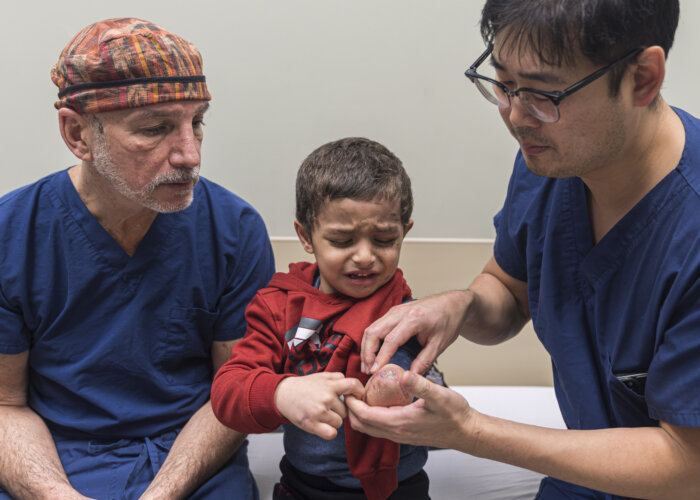
Omar was an outgoing boy, she said, and he’s clever like his late father, an engineer. Now he’s often withdrawn and breaks into tears easily.
Ask Omar a question, and he covers his ears with his right hand and the stump of his left arm, declaring, “I don’t want to talk.”
“Kindergarten was nice,” he eventually admits, “and I was happy on the first day.” He started school just weeks before the war. But he doesn’t want to go to kindergarten anymore. He’s afraid to leave his aunt’s side.
Flying to New York may have given him a new dream, though.
“When I grow up, I want to be pilot,” Omar said, “so I can bring people places.”
Omar was the first Palestinian child from Gaza taken in by the Global Medical Relief Fund. The Staten Island charity’s founder, Elissa Montanti, has spent a quarter-century getting hundreds of kids free medical care after they lost limbs to wars or disasters.
Each child started out as a stranger. Each one joined what she calls her “global family,” and will come back to the U.S. for new prosthetic limbs as their bodies grow. Her charity sponsors everything except the medical treatment, which is donated, primarily by Shriners Children’s Hospital of Philadelphia.
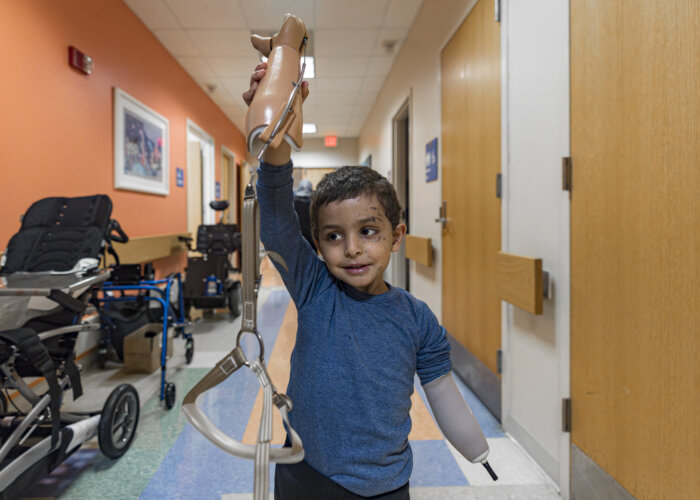
The deadliest round of the Israeli-Palestinian conflict in decades was sparked Oct. 7 when Hamas-led militants broke through Israel’s security barrier around Gaza and stormed into Israeli communities. Around 1,200 people were killed and some 250 taken hostage.
Israel has laid waste to much of Gaza in response. In five months of war, 80% of Gaza’s 2.3 million people fled their homes.
The death toll in Gaza topped 30,000 Thursday, with more than 70,000 wounded, the Health Ministry said. The ministry does not differentiate between civilians and combatants but says women and children make up around two-thirds of those killed. Israel blames civilian deaths on Hamas, saying militants operate among the population.
Two weeks into the war, Omar and Abu Kuwaik narrowly escaped death. The two families evacuated their Gaza City apartments just before Israeli airstrikes flattened the buildings.
With only the clothes on their backs, the families split up to stay with different relatives. But in wartime, seemingly trivial decisions — like where to seek shelter — have outsized consequences.
On Dec. 6, two Israeli airstrikes slammed into Omar’s grandparents’ home in the Nuseirat refugee camp. The explosion peeled the skin from his face. His left arm could not be saved below the elbow. He had burns on his leg and torso. His parents, 6-year-old sister, grandparents, two aunts and a cousin were killed.
Omar was pinned beneath the rubble. Rescuers dug until they found his little body, still warm, bleeding but somehow alive.
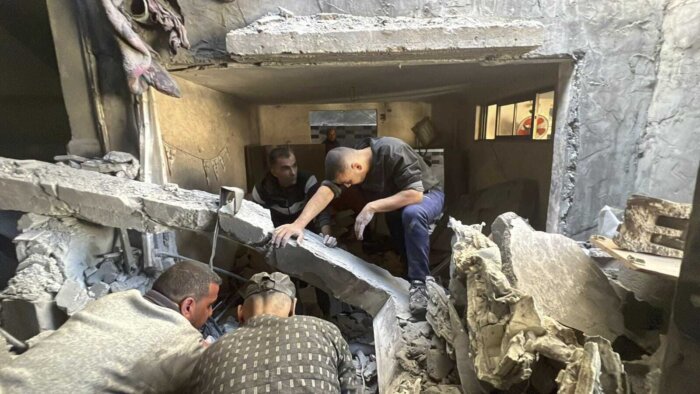
“Our view was, anywhere is better for him than being in Gaza,” said Adib Chouiki, vice president of Rahma Worldwide, a U.S.-based charity, who heard about Omar from the group’s team in Gaza.
Israel and Egypt tightly restrict movement of people out of Gaza, allowing just a few hundred to exit each day, mostly those with foreign citizenship. The World Health Organization says 2,293 patients – 1,498 wounded and 795 ill – have left Gaza for medical treatment alongside 1,625 companions. Yet roughly 8,000 patients remain on a waiting list to go abroad, according to the U.N. refugee agency.
Chouiki began reaching out to contacts in the Palestinian, Israeli and Egyptian governments. He got new passports for Omar and Abu Kuwaik, and Israeli security clearance for them to travel to Egypt.
An ambulance brought them to the border, where an Egyptian ambulance whisked them across the Sinai desert.
Inside an Egyptian military hospital, Omar and his aunt waited for weeks until U.S. Customs and Border Protection gave them the green light to fly to New York on Jan. 17.
At Shriners Children’s Hospital in Philadelphia, Omar had skin graft surgery for the burn on his leg. He was eager to get his new prosthetic arm Wednesday, smiling mischievously as he reached out to touch it. “My arm is nice.”
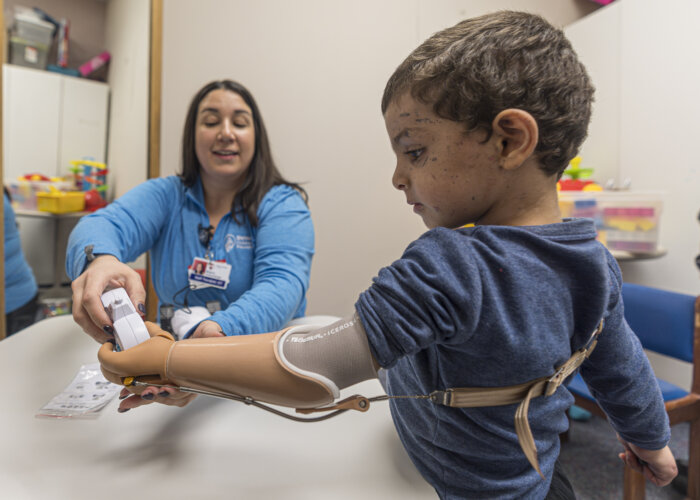
Omar and his aunt boarded a plane to Cairo the next day, accompanied by a member of her extended family. They’ll stay at his home in Egypt while seeking more permanent housing.
“I almost don’t sleep,” Abu Kuwaik said. “I think about Omar and I think about my kids, and the conditions they’re living in back there in the tents.”
Food is scarce. Israel’s near-total blockade of Gaza has pushed more than half a million Palestinians toward starvation and raised fears of imminent famine. The flimsy tent her family shares with 40 other people offers little protection from rain and wind, she said. When one person gets sick, illness spreads like wildfire.
The war has repeatedly knocked out cellphone and internet service in Gaza, but Abu Kuwaik keeps in touch “when there’s network.”
With their return to Egypt, Omar and his aunt’s futures are unclear; they might be stuck in exile.
For Abu Kuwaik, though, there’s no home for Omar to go back to.
“I cannot imagine … that I go back to Gaza,” she said. “What would his life be? Where is his future?



